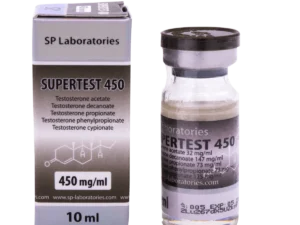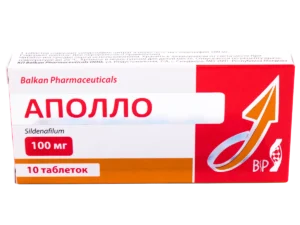Anabolic steroids are pharmacological drugs that mimic the action of the male sex hormones testosterone and dihydrotestosterone. Anabolic steroids accelerate the synthesis of protein inside the cells, resulting in marked hypertrophy of muscle tissue (generally referred to as anabolism), which is why they are widely used in bodybuilding. The action of anabolic steroids is conventionally divided into two areas: anabolic activity and androgenic activity. The word “anabolic” comes from the Greek “anabolein”, which translates as “to build up”; the word “androgenic” comes from the words “andros” and “genein”, which translates as “to make a man” or “to masculinize”.
Men account for 90-95% of all steroid use, with research showing that the primary motivation is to gain a competitive advantage in the face of sexual partners and to increase their social status, influence, and self-affirmation.
Synonyms
Anabolic steroids have a large number of synonyms:
- Anabolics
- Androgens
- AC (abbr. Anabolic Steroids)
- AAS (abbr. Anabolic-Androgenic Steroids – official name in foreign literature)
- Steroids
- Vitamins (slang name in bodybuilding)
- Chemistry (slang name in bodybuilding)
- Pharma (slang name in bodybuilding)
History of anabolic steroids
The use of anabolic steroids began even before their identification and isolation. The medical use of animal testicular extracts began at the end of the 19th century. In 1931 Adolf Butenandt managed to isolate 15 mg of androstenone from 10,000 liters of urine. This anabolic steroid was subsequently synthesized by Leopold Ruzicka in 1934.
In the 1930s it was already known that testicular extract contained a more potent anabolic steroid than androstenone. Three groups of scientists, funded by three competing pharmaceutical companies from different countries: the Netherlands, Nazi Germany and Switzerland, began the search for more powerful components. Thus, in May 1935, Karoly Gyula David, E. Dingemanse, J. Freud and Ernst Laqueur managed to isolate crystal testosterone. The hormone received this name based on its origin: dough – testicle, sterol – steroid structure, and the ending -on, which indicates that the substance is a ketone.
The chemical synthesis of testosterone from cholesterol was made in the same year by Butenandt and G. Hanisch. One week after this event, a third group of Ruzicka and A. Wettstein applied for a patent for a new method of chemical synthesis of testosterone. Ruzicka and Butenandt received the Nobel Prize in 1939 for their inventions.
Human clinical trials, including oral administration of methyltestosterone and injections of testosterone propionate, began in 1937.
The first mention of an anabolic steroid in the history of strength sports dates back to 1938, when it refers to testosterone propionate in a letter to the editor of Strength and Health magazine. There are rumors that in Nazi Germany anabolic steroids were used on soldiers in order to increase aggression and endurance, but these facts have no official confirmation at this time. However, Adolf Hitler himself received injections of anabolic steroids, according to his personal physician. Anabolic steroids were used by the Nazis in experiments on concentration camp inmates. In other countries, however, anabolic steroids were used to treat and recover emaciated prisoners who had been released from the camps.
Modern History
The anabolic properties of testosterone were perfected in the 1940s in the Soviet Union and Eastern Bloc countries such as East Germany, where anabolic steroids began to be used to improve the performance of Olympic weightlifters. In response to the success of the Russian weightlifters, Dr. John Ziegler, a doctor on the U.S. Olympic team, began working with chemists to develop an anabolic steroid with less androgenic activity, resulting in Methandrostenolone. The new drug was approved by the FDA in 1958. It was most commonly prescribed for the treatment of severe burns, and for the elderly, but most Metandrostenolone was consumed in bodybuilding and other strength sports. Dr. John Ziegler prescribed only small doses for athletes, but he later noticed that athletes who exceeded the dosage had prostatic hypertrophy and testicular atrophy.
In 1976, anabolic steroids were banned by the International Olympic Committee, ending the history of their legal use in sport, and 10 years after that special tests were developed to determine anabolic steroids in the urine.
The search for new anabolic steroids
Currently, the entire variety of anabolic steroids and their modifications are based on four main ideas:
- Alkylation at the alpha-17 position with a methyl or ethyl group, to prevent the drugs from breaking down in the liver, making oral administration in pill form possible.
- Esterification at the beta-17 position, which makes the drug soluble in fat and allows the creation of a depot in the tissues that resorbs for a long time, thus greatly increasing the duration of action (up to several months) of the anabolic agent.
- Changing the ring structure of the anabolic steroid refers to oral and parenteral drugs, is associated with the desire to increase the anabolic index.
- Alteration of the structure, which prevents the conversion of steroids to estrogens.
A new class of selective androgen receptor modulators is also under active development.
The mechanism of action of steroids
The mechanism of action of anabolic steroids is not similar to that of peptide hormones. Once in the bloodstream, steroid molecules are distributed throughout the body where they react with skeletal muscle cells, sebaceous glands, hair follicles, certain parts of the brain, and certain endocrine glands. Anabolic steroids are fat soluble, so they can penetrate the fat cell membrane; inside the cell, anabolic steroids interact (bind) with the androgen receptors in the nucleus and cytoplasm. Activated androgen receptors transmit a signal inside the cell nucleus, resulting in changes in gene expression or activation of processes that send signals to other parts of the cell. This results in stimulation of synthesis of all types of nucleic acids and triggers the formation of new protein molecules.
The effects of anabolic steroids on muscle mass growth are due to the following mechanisms:
- accelerated protein synthesis
- decreased recovery time
- decreasing the influence of catabolic hormones (cortisol, etc.)
- shifting cell differentiation towards muscle cells, decreasing the formation of fat cells
- acceleration of metabolic reactions, due to which fat breakdown occurs
- muscle memory
Effects of anabolic steroids
The effects of anabolic steroids fall into two main categories: anabolic and androgenic.
Anabolic Effects:
- Significant increase in muscle mass (5-10 kg per month)
- Increase in strength performance
- Increased endurance and performance
- Increase in red blood cell count
- Strengthening of bone tissue
- Reduction of fat reserves
Androgenic effects:
- Masculinization
- Virilization
- Hypertrophy of the prostate
- Testicular atrophy
- Loss of hair on the head, and activation of growth on the face and body
From which we can see that only anabolic effects are pursued in bodybuilding. Steroids are being developed that have strong anabolic effects and low androgenic effects. The index that reflects this ratio is called the anabolic index. At the moment, almost all anabolic steroids have pronounced androgenic effects.
Additional effects:
- Increased appetite.
- Increased self-confidence and self-esteem
- Increased sex drive
Side Effects of Anabolic Steroids
In the list below, the side effects are listed according to their frequency of occurrence.
During the course:
- Irritability or “steroid rage”
- Increased blood pressure
- Acne (acne)
- Increased libido (considered a beneficial effect in some cases)
- Mood swings
- Fluid retention (in aromatics)
- Increased cholesterol levels (resulting in atherosclerosis)
- Gynecomastia (cause only those anabolic steroids that convert to estrogens or those with progestin activity – trenbolone and nandrolones)
- Masculinization in women
- Liver damage (inherent to those drugs that have a methyl group in the alpha-17 position)
- Myocardial hypertrophy with development of ischemia
- Growth arrest at a young age
- Hair loss (very rare)
Post-course:
- Decreased libido
- Impotence
- Decreased sperm production
- Infertility
- Testicular atrophy (in overdoses and long courses)
- Depression
The picture of complications is largely determined by the pharmacological profile of the drug, some are safer, others less so. Strict adherence to administration and monitoring by a medical professional is required to minimize risk.
Exaggeration of the dangers of steroids in the media
Despite the variety of side effects of anabolic steroids, it should be noted that currently the information about them is exaggerated. In the press and on television one often hears that taking anabolic steroids leads to imminent infertility, impotence, liver damage, and so on, although in fact even excessive doses of steroids do not always lead to irreversible consequences.
In addition, we must distinguish between “abuse” and “misuse. Thus, according to the National Institute on Drug Abuse (NIDA), taking anabolic steroids according to the instructions in 80-95% of cases does not cause complications and adverse reactions, and most of the side effects are completely reversible.
Abuse involves taking steroids in high doses or excessive duration of courses. In this situation, the risk of side effects increases significantly and the frequency of irreversible complications increases. As a rule, steroids are presented in the media against the background of “abuse,” so a false picture is created of the extreme danger of using anabolic steroids.
Prevent side effects
- Do not exceed the recommended doses
- Do not combine several anabolic steroids, unless intended for the course
- Do not exceed the duration of the course
- Women should not take anabolic steroids at all, or choose from drugs with a high anabolic index.
- Do not use anabolic steroids under the age of 25
- Be sure to include PCT, this will significantly reduce or prevent many side effects.
These recommendations can reduce the incidence of side effects to 1% or less, and keep the muscle mass and results gained.
Anabolics in bodybuilding
Anabolic steroids can be used in bodybuilding primarily to increase muscle mass and strength performance. In addition, steroids help maintain muscle mass during drying and relief work, and help increase training performance by increasing stamina and strength.
Combination
When gaining muscle mass, taking anabolic steroids should be combined with a systematic power training, a high-caloric diet. As for sport nutrition, it is advisable to consume protein and BCAA along with steroids because they are necessary for building one’s own proteins; besides, one may take creatine, vitamin and mineral complexes, as well as supplements for PCT.
Warning
Anabolic drugs may only be used as prescribed by a physician and are contraindicated in children. The information provided does not encourage the use or distribution of potent substances and is intended solely to reduce the risk of complications and side effects.







